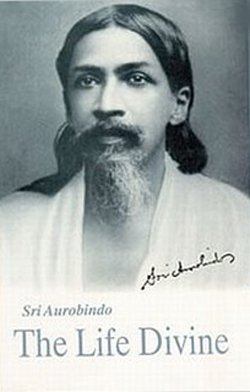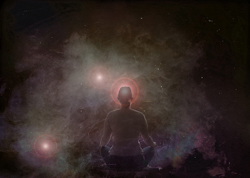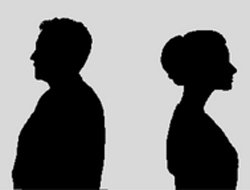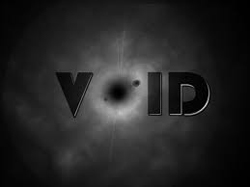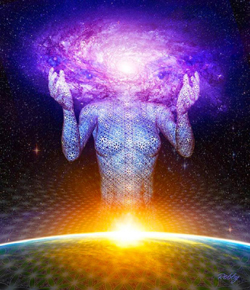Integral Health
The metaphysical basis for Integral Health — reconciling different poises of Reality
In Chapter IV of The Life Divine, Sri Aurobindo, while unveiling the nature of the Omnipresent Reality, makes three important reconciliations at three experiential levels:
a. The first reconciliation is between Matter and Spirit;
b. The second reconciliation is between the Passive Brahman and Active Brahman; and
c. The third reconciliation is between Being and Non-Being.
These reconciliations are not only important from the metaphysical perspective but have practical ramifications in life itself with relevance to health and psychology.
Matter and Spirit
Sri Aurobindo does not interrelate Matter and Spirit by reducing one in terms of the other or constructing an eclectic model but by a third way. He considers consciousness to be the reality of existence in whose bosom Spirit and Matter are ‘distinct’ formations. Everything that exists is a formation of consciousness and different formations have different distinctive identities and poises so as to manifest a richly variegated, diversified and complex play of existence. Yet if all these distinct formations were to lose their distinctive positions, there would still exist the matrix of consciousness in which they manifested.
Ordinarily, it is not possible to view Matter and Spirit as distinctive formations in the matrix of consciousness unless one extends one’s ego-bound individual poise to the poise of cosmic consciousness. The cosmic consciousness provides the field where Matter and Spirit can complement each other without belittling each other (1). In other words, it is the matrix where spirituality can blossom in material life. Naturally, the synthesis of Spirit and Matter is an experiential realisation for which ego-transcendence is the foremost requisite. That is why the synthesis of Spirit and Matter has classically been a spiritual endeavour. The materialists were not interested in such a synthesis till 20th century physicists, followed by transpersonal psychologists, realised that explanatory gaps in their own paradigms could not be explained unless one acknowledged consciousness as an omnipresent reality.
The reconciliation of Matter and Spirit also leads to the relation between the One and the Many. The Spirit represents the unitary principle of consciousness. Matter represents the endless divisibility, ad infinitum, of consciousness. Both the oneness and the multiplicity are different poises of the same Reality and have been co-existing eternally. Glorifying one at the expense of the other does not do justice to the integral Truth of Reality. Thus a spiritual pursuit that ignores the material life is as incomplete as a material life without spiritual values. An ideal personality development programme must follow a holistic paradigm where both the spiritual and material perspectives are given equal weight. In the sphere of health, a mere materialistic well-being that culminates in hedonism triggers off new, hitherto unforeseen illnesses. Integral Health follows a consciousness approach where material well-being is not an end in itself but the support of a spiritual dimension resulting in a model of integral well-being.
The Passive Brahman and Active Brahman
Once affirmed that it is the same Reality, which in the mode of cosmic consciousness, holds in its matrix the essence of Spirit and Matter, spiritual seekers usually attempt to understand the nature of the Reality itself. A section of spiritual stalwarts experience Reality as a silent, passive Self or Brahman, detached from the manifestation and having neither meaning nor necessity for the manifestation, leading to a world-shunning ascetic outlook. Another section of spiritual stalwarts experience Reality as an active, dynamic Brahman, investing the manifestation with meaning and purpose.
Sri Aurobindo explains that the ‘passive’ and ‘active’ Brahmans are two poises of the same Reality and complement each other (2). The passivity or silence actually supports and permits the activity or dynamism. The silent and the active Brahman are not conflicting entities denying or affirming a cosmic illusion; they are one Brahman in two poises necessary to each other. “It is out of this Silence that the Word which creates the worlds for ever proceeds; for the Word expresses that which is self-hidden in the Silence. It is an eternal passivity which makes possible the perfect freedom and omnipotence of an eternal divine activity in innumerable cosmic systems (3).”
This relation between silence and dynamism has important repercussions in health and psychology. An important area to understand this importance is the field of stress-linked disorders. Nature has formulated stress reaction with an adaptive and survival value when faced with physical stressors. However, with the march of civilisation, the stressors are not usually physical in nature (like lions or crocodiles) but psycho-social in character (like financial crunch, marital discord, work pressure or legal wrangles). Thus stress response has today become maladaptive leading to a plethora of psychosomatic disorders. The usual way to cope with the new-age stressors has been through lifestyle management practices such as cessation of smoking, reducing obesity, regular exercises, learning to relax, spending quality time with oneself and one’s family. Such measures act as palliatives and as adjuncts to therapeutic modalities. However these measures are effective only at the level of the outer being or surface personality and need to be supplemented by yet deeper techniques. Yoga psychology points to a more effective way to stress-management. The cultivation of an inner poise establishes a base of silence and peace within that supports and permits the outer dynamism and action. A life of dynamism, intense work-pressure and hectic activity can lead easily to stress-linked disorders if not supported by a base of silence, peace and inaction. Sri Aurobindo explains that when silence and dynamism are reconciled, the soul remains free and still even in the midst of all action (4). This is the sine qua non of Integral Health.
Being and Non-Being
After reconciling ‘Matter’ and ‘Spirit’, for which one has to extend one’s consciousness from the ego-bound individual poise to the poise of cosmic consciousness, and then subsequently reconciling the ‘active’ and ‘passive’ poises of the ‘Spirit’ or ‘Brahman’ in the cosmic consciousness and elaborating its implications in the individual human nature, Sri Aurobindo finally reconciles the experiential constructs of ‘Being’ and ‘Non-Being’ — a reconciliation that can be done only at the transcendental poise of consciousness that surpasses and yet supports the cosmic and individual poises.
The concepts of Being and Non-Being have emerged from very deep and intensive spiritual endeavours in pursuit of Truth and it is difficult to translate such metaphysical constructs in terms of psychology. Yet, their significances and applications are meaningful in the attempts to perfect human nature.
Emergence of Being and Non-Being as concepts
Whatever ‘exists’, whether tangible like matter, living systems, solar systems, or abstract like thoughts, emotions, fantasies, is supposed ‘to be’, is transient, time-linked, impermanent. Even the superstructures man builds — cultures, civilisations, empires, nations, religions, — all are, in a way, constrained within the limits of time and space and cannot fulfill man’s longing for an ‘eternal element’ in the cosmic scheme of things.
This void in knowledge led the spiritual seers and mystics to search for a ‘Reality’ behind all transitory phenomena. Of course, our usual sensory perception and rational intellect can give only ‘fragmentary’ experiences of the world. Yogis and mystics cultivated ‘suprarational’ faculties to acquire knowledge — faculties that transcended senses and reason and led to ‘experiential’ contact with realities that could not be grasped by the senses and reason.
With the help of these supra-rational faculties, mystics experienced an everlasting ‘Reality’ behind all transitory phenomena — a Reality which was original and eternal and to whom all phenomena could be secondarily related. However, the relationship of the time and space bound phenomena with the Eternal Reality was perceived differently by different seers. Some viewed that the relation was ‘symbolical’, some viewed that it existed only in the ‘subjective’ mindset of the perceiver, while some viewed that the relationship was ‘realistic’. Nevertheless, they were unanimous that the ‘Reality’ behind surpassed and transcended all phenomena. These different ways of viewing the relationship of the world-phenomena with the Eternal Reality gave rise to different metaphysical, spiritual and religious viewpoints.
Now the nature of this eternal Reality, also called variously as the Absolute or the Infinite, behind all transitory phenomena was also experienced differently by different seers. Some experienced it with positive attributes, — a pure Consciousness or a pure limitless Existence or pure ineffable Bliss (these are not additive terms, they are different experiences which the same Reality transmits) and termed it ‘Being’.
While some perceived ‘Reality’ as Being, others perceived the same ‘Reality’ as a void, a nihil, a fathomless zero (note that they might not be denying a Reality behind all phenomena — only they might be denying any positive attributes to describe the Reality), and hence termed it as ‘Non-Being’ or Absolute Non-Existence. Either the Non-Being negated everything or else gave birth to Being. As an experiential construct, this concept of Non-Being is as valid as other experiences. The only problem is that when translated in mental terms, it raises logical difficulties. If the Non-Being alone is ‘Real’, and Being itself emerges from Non-Being to sink into it again, then everything, including the ‘concept’ of ‘Being’ becomes illusory —
“… does not the Non-Being at least, as primal state and sole constant reality, negate and reject all possibility of a real universe? The Nihil of certain Buddhist schools would then be the true ascetic solution; the Self, like the ego, would only be an ideative formation by an illusory phenomenal consciousness (5).”
Sri Aurobindo answers this query by positing that verbal distinctions do not necessarily represent Ultimate Truths. This is because there are Truths, which cannot be perceived by our cognitive repertoire. This is also the reason that the Reality has often been described as ‘that is not what we know and that is not what we do not know’.
“Non-Being is only a word…. We really mean by this... something beyond the last term to which we can reduce our purest conception and our most abstract or subtle experience of actual being as we know or conceive it while in this universe. This Nothing then is merely a something beyond positive conception. We erect a fiction of nothingness in order to overpass, by the method of total exclusion, all that we can know and consciously are. Actually when we examine closely the Nihil of certain philosophies, we begin to perceive that it is a zero which is All or an indefinable Infinite which appears to the mind a blank, because the mind grasps only finite constructions, but is in fact the only true Existence (6).”
Thus, Non-Being is a term to describe that experience of Reality which exceeds our ability to cognise. It would be more logical to consider Non-Being not as an inexistent zero but as “an x which exceeds our idea or experience of existence (7)...” In this sense, the term Non-Being becomes equally applicable to the Absolute Brahman (Being) of the Advaita as well as the Void or Zero of the Buddhists, for this ‘X’ is then a source of the universal phenomena – either in a realistic or in a conceptual or ‘subjective’ way.
The reconciliation
Sri Aurobindo reconciles the experiential realisation of Being and Non-Being by validating them both with equal significance. In fact he rejects the simplistic notion that at some fanciful point in time, Being emerged from Non-Being. The difference between Being and Non-Being is due to the differing ‘experiential realisations’ of different poises of Reality at the level of the Transcendental Consciousness. They cannot be linked in time because these concepts are independent of linear temporality. Being and Non-Being are simultaneously real concepts. “They permit each other even though they refuse to mingle (8).” At the Transcendental Consciousness, the Non-Being permits the Being (just as in the cosmic consciousness, the Silence permits the Activity). Both are complementary to each other without losing their distinctive characters.
Application in psychology — implications of Being
What is conceived as ‘The Being’ in the Transcendental Consciousness is projected as several ‘beings’ at other planes of consciousness:
a. As a ‘universal being’ at the level of cosmic consciousness;
b. As a central being or Jivatman or Self supporting the individual being; and
c. Within the individual being as
(i) The ‘outer being’ which is studied as ‘personality’ in psychology;
(ii) An ‘inner being’ behind the outer being which is in communion with the universal consciousness. An aspect of the universal consciousness is known as the collective unconscious in contemporary psychology. However, unless the relevance of the ‘inner being’ is accepted, the universal consciousness cannot be linked with the surface personality; and
(iii) ‘Inmost being’ which is a projection of the Jivatman in the manifestation. Unless the relevance of the ‘inmost being’ (Sri Aurobindo named it as the ‘Psychic Being’) is accepted, one cannot link the individual essence with Divinity and the Godhead cannot be revealed within the individual. In that case, man will always be incapable of growing into God or identity with The Divine.
The ‘inner being’ and ‘inmost being’ are constructs perfected by Sri Aurobindo and are unique contributions to the field of a futuristic psychology. He has also, with great acumen, distinguished the ‘inmost being’ (which is the soul-principle in evolution) from the ‘Central-Being’ or Jivatman. The Central Being supporting the manifestation allows an individual to link up with the state of Non-Being as well as Being. Hence an experiential identification with the Central-Being gives us a sense of impersonality in personality (9).
Implications of Non-Being
The experiential realisation of Non-Being gives rise to the construct of Impersonality as a dimension of human nature. Contemporary psychology studies the human being only along the dimension of personality. But personality is only one facet of human nature. If one has to experience either the Nirvana of Buddhism or the Absolute Brahman of Advaita, then one has to first shrug off one’s ego-bound ‘personality’ (after all ‘personality’ is derived from the word ‘Persona’, which means ‘mask’). The experiential realisation of Non-Being shows that Impersonality is an equally important dimension of human nature. If accepted in principle, this is going to radically change the course of modern psychology. Sceptics will immediately ask — ‘Personality can be studied by understanding the human being in the field of action, in life. But impersonality calls for a study of the human being in inaction — in a sort of withdrawal from life. Can that have practical significances in life?’
Sri Aurobindo explains that the simultaneous awareness of Being and Non-Being can be realised by the “awakened human soul (10).” In fact, if one has the experience of ‘inaction’, then one can be more powerfully active than someone who has only the experience of ‘action’. If someone has cultivated ‘impersonality’, and thereafter decides to be pragmatic and earthly-bound, then one’s actions can have enormous ramifications in the sphere of life. “Thus was it possible for the Buddha to attain the state of Nirvana and yet act puissantly in the world, impersonal in his inner consciousness, in his action the most powerful personality that we know of as having lived and produced results upon earth (11).”
“We start, then, with the conception of an omnipresent Reality of which neither the Non-Being at the one end nor the universe at the other are negations that annul; they are rather different states of the Reality, obverse and reverse affirmations. The highest experience of this Reality in the universe shows it to be not only a conscious Existence, but a supreme Intelligence and Force and a self-existent Bliss; and beyond the universe it is still some other unknowable existence, some utter and ineffable Bliss. Therefore we are justified in supposing that even the dualities of the universe, when interpreted not as now by our sensational and partial conceptions, but by our liberated intelligence and experience, will be also resolved into those highest terms (12).”
The progressive harmony between different states and poises of Reality heralds a change in the meaning of ‘psychological growth’, alters our concepts of personality, gives a new connotation to health and well-being and signifies a shift from ordinary psychology through a transpersonal route to a yet greater, futuristic, spiritual and truly Integral Yoga Psychology.
References
1. Sri Aurobindo. Birth Centenary Library, Volume 18. Pondicherry: Sri Aurobindo Ashram Trust; 1970, p. 25.,
2. Ibid. p. 26.
3. Ibid. pp.26-7.
4. Ibid.
5. Ibid, p. 27.
6. Ibid, p. 28.
7. Ibid, p. 28 (footnote).
8. Ibid, p. 28.
9. Basu S. Integral Health. Revised ed. Pondicherry: Sri Aurobindo International Institute for Integral Health and Research; 2011, pp. 80-4.
10. Sri Aurobindo. SABCL, Volume 18. p. 29.
11. Ibid.
12. Ibid, p. 32.
Share with us (Comments, contributions, opinions)
When reproducing this feature, please credit NAMAH, and give the byline. Please send us cuttings.

